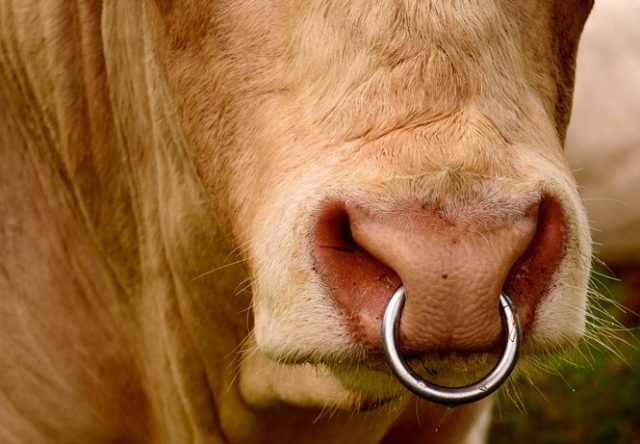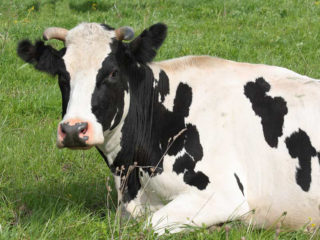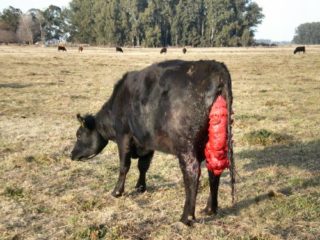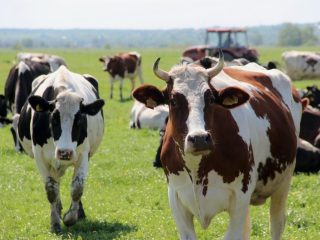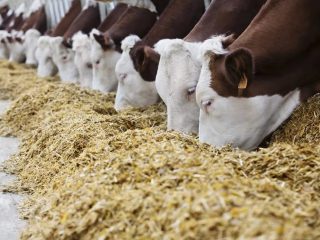A bull with a nose ring is a fairly common occurrence and is not considered to be anything out of the ordinary. The image of the animal is now practically inseparable from the ring threaded through the septum of the nose, however, the origins of this feature of keeping bulls for many remain unknown. Few people think about why a bull needs a nose ring. The answer to this question is simple - the ring makes it easier to control these wayward animals.
Why a bull's nose ring
The bull is an animal of large size and tough disposition. Obedience is difficult to achieve from them, which leaves its mark on the way bulls are kept on the farm. As a rule, they are placed separately from the herd and not walked with the cows, since it is difficult to calm bulls if they suddenly become stubborn or show aggression. Ultimately, other animals and the person himself may suffer, if possible measures of influence on the angry bull are not provided.
Moreover, sometimes the animal must be securely fixed in place for inspection or for carrying out any other manipulations. For this you need a bull's nose ring.
In most cases, an animal can be pacified only with the help of pain syndrome. This requires an impact on the bull's sensitive areas, which include:
- ears;
- eyes;
- nose.
In these places, cattle have zones with a low pain threshold. Thus, the tension on the ring, which is threaded through the sensitive nasal septum, forces the animal to follow in the indicated direction, greatly facilitating control over it and reducing the risk of injury to others.
Not only adults, but also calves go through the piercing. The only difference is that the young do not need much supervision. In this case, the procedure is necessary in order to wean the young from the mother. The fact is that a ring is inserted into the nose of the calves, equipped with thorns directed outward. When a young goby presses its nose against the udder, the contact hurts the cow, as a result of which she is forced to drive her cubs away from her. When the calf stops expressing milk, the ring is removed from the nose.
The piercing procedure is primarily applied to breeding animals with an absurd character, which cannot be controlled in other ways. Calm, level-headed bulls usually avoid this procedure.
How is the piercing procedure performed?
The optimal age for piercing the nasal septum is 7-10 months. Ringing can be carried out by both a veterinarian and a person without special medical knowledge, with proper study of the instructions.
A ring for cattle is chosen strong, reliable. Its surface should be smooth, without any protrusions and irregularities. The recommended section is 1 cm, the material is stainless steel.
The ringing procedure is as follows:
- The bull is fixed in place with ropes, paying particular attention to the position of the head.
- Then the male is injected into the jugular vein "Xylazine", no more than 0.5 ml. This drug reduces physical activity and makes the operation easier.
- The next step is to cleanse the bull's nasal cavity from any secretions. To do this, use a cotton swab.
- An injection of novocaine is made into the nasal septum (2%).
- With the sharp end of the ring, previously disinfected, pierce the septum of the nose, clamp it with forceps and snap a special lock.
- After that, you can carry out additional disinfection of the wound.
- As soon as the animal recovers from the anesthesia, pain reliever is injected into it. For these purposes, the drug "Meloxicam" is suitable. Repeated anesthesia is carried out again 10-12 hours after the ringing procedure.
After the operation, the bull is left alone for 10-15 days. During this time, the wound is not touched, but regularly examined. If necessary, if the puncture begins to inflame, it is disinfected several more times. When the wound heals, the bull is gradually led by the ring. For convenience, it is slightly raised, fixing it with a belt on the horns. So, it will not interfere with the animal. The pressure on the ring is made by means of a special stick-carrier, which ends with a hook. Before taking the bull out of the stall for a walk or examination by a veterinarian, he is hooked with a carrier stick on the ring. Only when the animal is under reliable control can it be taken outside.
Despite the apparent ease of banding, it is recommended that the procedure be performed by a veterinarian. There are several reasons for this:
- A person without experience can accidentally damage the septum of the nose. As a result, inflammation and decay of tissues can begin if the damage is not treated in time.
- Careless movement can cause unnecessary pain to the bull, which will cause a completely natural reaction - the animal will begin to resist and, most likely, will injure others.
- The bull remembers some colors well. In particular, he will remember how the person carrying out the operation was dressed, and in the future may react aggressively to the approach of the owner in clothes of a similar color. Therefore, it is better to entrust the piercing to a person who is not in contact with the male on a regular basis.
In addition, you can learn more about why a bull needs a nose ring from the video below:
Conclusion
A bull with a nose ring is a common sight on the farm. To an uninitiated person, such a "piercing" may seem inhumane, however, it is one of the few ways in which you can force an animal to obey. Without a ring passed through the nasal septum, it is impossible to transfer the bull to another room for examination by a specialist or send him for transportation. Screaming and violence will only anger the male even more, which can lead to injury to the accompanying staff. Slight painful sensations from the tension of the ring force the bull to obey and follow the person.
